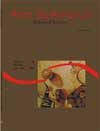Development of <em>Astyanax bimaculatus</em> (Linnaeus, 1758) juveniles at different stocking densities in net ponds
Abstract
The influence of stocking density on the development of juveniles at the initial phase in experimental net ponds is analyzed. Three hundred individuals with 0.50 to 0.02g mean initial live weight were distributed into a totally randomized design with four treatments and six repetitions. The density rates of 31, 62, 93 and 124 animals/m3 were used. The physical and chemical parameters were verified every three days. Although a quadratic effect (p < 0.05) for weight gain and total length variables was reported, total biomass increased linearly (p < 0.05) with an increase in stocking density. No differences (p < 0.05) in food conversion and condition factor were observed. The physical and chemical parameters remained at adequate levels. It may be concluded that stocking density influences the development of juveniles and that the density rate of 31 animals/m3 is the most efficient for their development. On the other hand, the rate of 124 individuals/m3 for the breeding of juveniles in net ponds is also practicable, though resulting in smaller individualsDownloads
Download data is not yet available.
Published
2008-05-09
How to Cite
Vilela, C., & Hayashi, C. (2008). Development of <em>Astyanax bimaculatus</em> (Linnaeus, 1758) juveniles at different stocking densities in net ponds. Acta Scientiarum. Biological Sciences, 23, 491-496. https://doi.org/10.4025/actascibiolsci.v23i0.2706
Issue
Section
Biology Sciences
DECLARATION OF ORIGINALITY AND COPYRIGHTS
I Declare that current article is original and has not been submitted for publication, in part or in whole, to any other national or international journal.
The copyrights belong exclusively to the authors. Published content is licensed under Creative Commons Attribution 4.0 (CC BY 4.0) guidelines, which allows sharing (copy and distribution of the material in any medium or format) and adaptation (remix, transform, and build upon the material) for any purpose, even commercially, under the terms of attribution.
Read this link for further information on how to use CC BY 4.0 properly.
0.6
2019CiteScore
31st percentile
Powered by 

0.6
2019CiteScore
31st percentile
Powered by 











1.png)




3.png)













